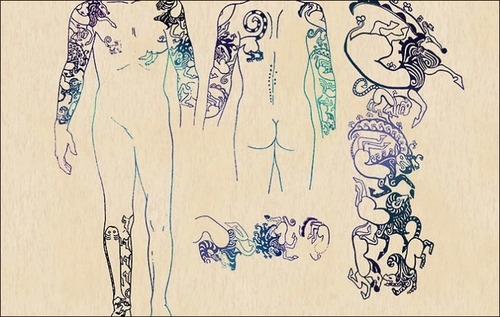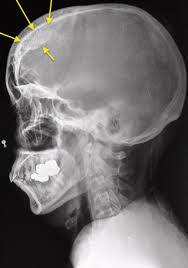So last time, I expressed my concern on how the Hong Kong Police and Firemen had mistreated the crucial trace evidence, namely the concrete casket. And I also opposed their methodology. Some of the readers thought that police should be more experienced on handling these cases than me, and also thought that the law enforcement units had made this judgment after chains of thorough thinking.
I supposed I am not in a good position to comment further on how their approach was when they were at the scene. After all, I was not at the crime scene in person. Also, readers state that that was indeed the raw differences between theories, archaeology and the reality. I am only wishing to use the following space to replied to three of the main questions raised by the readers. I have also cited the Los Angeles Medical Examiners case report, in hope of the M.E. would be able to shed some lights on the questions the readers made from their study and research.
Question 1: The size of the concrete casket is too huge! May be they are not scanned because the law enforcement was not able to transfer them for scanning?
If you ever watched any crime shows on TV (of course, Bones is a good example. Everyone will yell “back to the lab!”), you will see they are always able to transfer whichever evidence they found back to the lab before further analyzing. Reality, not so much. This is how Ground Penetrating Radar comes into play. In archaeology, Ground Penetrating Radar (GPR) is used to detect and reflect any buried artifacts, monuments, archaeological sites. It is especially handy when archaeologists are about to look for hidden burial sites and buried remains. GPR allows noninvasive examination, and very helpful for experts and scientists to learn about the structure of the hidden architectures and bodies. Furthermore, size of a GPR is only about the size of a vacuum. Some companies even invented the GSSI Mini, which is about the size of a laptop for carrying scientists to have easy access in the field. All GPR and GSSI Mini come with a monitor, and very easy to connect to the laptop. That said, it is easy to document digitally the detected images. One may use slightly more time on using the GPR before stepping or unfold the crime scene, yet save the team and resources from doing extra and additional steps and procedures in the later investigation. In this case, that would be the suspicious broken palm, posture of the body, etc.
Question 2: It was mandatory to crack the concrete casket open, as the body was decomposing already.
News and police report claimed that the concrete casket was dried by the time of discovery. Yet, concrete would not dry but only cure and hardened. The hardening and curing of concrete, in other words, does not come from the evaporation of water from the chemical composition of the concrete. Rather the water molecules have transformed, merged and bonded together with the concrete particles as part of their chemical structure. An experiment pointed out that the mass of concrete before hardening/ curing is about the same with after [1]. The only slight difference between the mass was from the evaporation of the water on the concrete surface that with no cover. Last time, I have also mentioned that concrete is relatively porous. When cement hardens, it means that the water molecules and air molecules have filled in all those pores. This type filling makes concrete looks strong but indeed not. That said, it is relatively soft inside, while the outside of the concrete looks hard.
And for the body that was covered by the concrete, the decomposition of it liquefies from inside to outside, and all the decomposition was triggered by the enzymes in muscles. During the hardening process of the concrete, since it is a exothermic reaction (i.e. it releases heat in the whole process), the interior of the concrete casket would reach 175F in the first few days, which results an acceleration in the decomposition rate. After curing, the concrete becomes a good insulator that blocked the air and heat to reach the body, and thus successfully decrease the rate of decomposition again.
During the stage of decomposition, body liquids (any liquid in the body, you name it :)) would leak out of the body. Normally, as in general when a body is exposed to air, atmospheric air would help evaporate liquids and water. However, when a body like the one in this case is being buried in a concrete casket, all the fluid is trapped in the casket, and at the end turned the soft tissues into a mush. At the end, fluids would leak outside the casket, or concrete casket. This is not only something visual but also would give a strong odor. Evenly so, it does not mean an invasive act should be taken to the casket. Keep in mind that bodies starts breaking down the moment the heart stopped beating.
Question 3: Readers think that using merely textbook archaeology, i.e. using brush in the act, has not thoroughly considered the scenario at scene.
To be honest, this is some attitude that forensic scientists should have and maintain all along. In the forensic field, a lot of the tools we use are indeed very creative. For instance, you would find ladles on the autopsy table to scoop out fluid (for example inflammatory fluids in lungs) during autopsy; also would find those big stock pots in decomp bodies autopsy room for forensic anthropologists to do maceration. All these kitchenware is used with one and foremost premise: will not affect the quality of the collected evidences, or would not contemning evidences.
Los Angeles Medical Examiner Office claimed that there were only 5 cases of concrete casket located, till 2008, in the past 18 years in a report. They also stated in the report that, though cement and concrete affected the calculation or estimation of accurate postmortem interval, at the sam time they welly preserved all trace evidences [2]. In these 5 recorded cases, medical examiners were taken things slow, and excavate the bodies layer by layer in order to estimate the cause of death and time of death. Among all, LA medical examiners also indicated the frequent application of metal detectors and radiography in order to pinpoint the posture of bodes, and location. Sledgehammer and chisel are only implemented in a very much later stage, or only when they are sure it would not damage the body.
Back to the discussion, should we use heavy tools like sledgehammer and chisel, or only brush? Both. The foremost premise here is to not damaging the evidence. Only use heavy tools when the remains inside are well-documented. Also, the methodology with chisel should be go horizontally instead of vertically in order to reveal the context of the casket and the body.
Sad but true, concrete casket or related research is not commonly seen and discussed in the academia. These caskets can only open when all the conditions and situations are well-documented. In delicate crime scene like this one, officials should prioritize the preservation of crime scene in front of investigation just yet.
Remarks:
[1] Lesson 5: So, You Think Concrete Dries Out? (n.d.). Retrieved April 11, 2016, from
[2]
Toms, C., Rogers, C. B., & Sathyavagiswaran, L. (2008).
Investigation of Homicides Interred in Concrete—The Los Angeles
Experience. J Forensic Sci Journal of Forensic Sciences, 53(1), 203-207.
doi:10.1111/j.1556-4029.2007.00600.x




